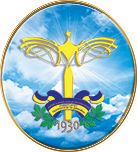Please use this identifier to cite or link to this item:
https://er.knutd.edu.ua/handle/123456789/31871| Title: | Phenomenon of intertextuality in linguistic and translational aspects |
| Other Titles: | Феномен інтертекстуальності в ліінгвістичному та перекладацькому аспектах |
| Authors: | Fedorenko, Svitlana |
| Keywords: | intertextuality intertext text linguistic aspect translation aspect typology of intertextuality |
| Issue Date: | 30-Oct-2025 |
| Citation: | Fedorenko S. Phenomenon of intertextuality in linguistic and translational aspects / S. Fedorenko // Folium. - 2025. - Vol. 7. - P. 223-229. |
| Source: | Folium |
| Abstract: | У статті розглянуто сутність феномену інтертекстуальності та його
типологію з точки зору лінгвістичних теорій та перекладацького
аспекту. З’ясовано, що інтертекстуальність як ознака будь-якого
твору, визначається науковцями як діалог тексту з текстом, елементи,
риси одного тексту в іншому. Наголошено, що ці риси обов’язково
є відомими читачеві, асоціюються з текстами та певними культурно
історичними епохами. Цей феномен може проявлятися на різних рівнях
структури твору: жанру, мотиву, позиції автора, читача. Окреслено,
що всі форми інтертекстуальності є знаками певної культури, епохи
чи ідеостилю будь-якого автора (зазвичай класика), які в процесі
свого використання набули декількох підтекстів, завдяки цьому
уможливлюючи діалог текстів, авторів та культур. Завдяки цьому
“чуже слово” в інтертексті посилюється, сприяючи породженню
нових імпліцитних смислів. Шляхом аналізу різних підходів і поглядів
науковців на феномен інтертекстуальності встановлено, що він полягає
в новому прочитанні твору з погляду міжтекстових зв’язків, зокрема
виявлення різних форм і напрямів письма (цитата, ремінісценція,
алюзія, плагіат, трансформація, стилізація в одній текстовій площині).
Зазначено, що прояви інтертекстуальності характерні для будь
якого стилю, жанру, що стає основою нової концептуалізації та
репрезентації переробленої та по-новому сприйнятої інформації, яка
втілюється у новому тексті. Результати проведеного дослідження
дають підстави стверджувати, що питання типології категорії
інтертекстуальності залишається дискусійним, оскільки ще й досі
немає єдиного загальноприйнятого визначення цього лінгвістичного
феномену, а його класифікація, напрями та способи для всебічного
вивчення його теоретичних засад потребують нових ідей та рішень, що
зумовлює подальшу перспективу вивчення даної теми у сфері сучасної
лінгвістики теоретичного і прикладного спрямування. of intertextuality and its typology from the perspective of linguistic theories and the translation aspect. It has been found that intertextuality as a feature of any work is defined by scientists as a text-to-text dialogue, elements, features of one text in another. It is emphasized that these features are necessarily known to the reader, are associated with texts and certain cultural and historical eras. This phenomenon can manifest itself at different levels of the structure of the work: genre, motif, position of the author, reader. It is outlined that all forms of intertextuality are signs of a certain culture, era or ideostyle of any author (usually a classic), which in the process of their use have acquired several subtexts, thereby enabling a dialogue of texts, authors and cultures. Due to this, the “foreign word” in the intertext is strengthened, contributing to the generation of new implicit meanings. By analyzing different approaches and views of scholars on the phenomenon of intertextuality, it has beens established that it consists in a new reading of the work from the point of view of intertextual connections, in particular, the identification of different forms and directions of writing (quotation, reminiscence, allusion, plagiarism, transformation, stylization in one textual plane). It is noted that manifestations of intertextuality are characteristic of any style, genre, which becomes the basis for a new conceptualization and representation of processed and newly perceived information, which is embodied in a new text. The results of the conducted research give grounds to assert that the issue of the typology of the category of intertextuality remains debatable, since there is still no single generally accepted definition of the linguistic phenomenon of intertextuality. Therefore, its classification, directions and methods for a comprehensive study of its theoretical foundations require new ideas and solutions, which determines the further scope for studying this issue in the field of modern theoretical and applied linguistics. |
| DOI: | 10.32782/folium/2025.7.32 |
| URI: | https://er.knutd.edu.ua/handle/123456789/31871 |
| Faculty: | Навчально-науковий інститут культури і креативних індустрій |
| Department: | Кафедра філології та перекладу (ФП) |
| ISSN: | 2786-8001 (Print) 2786-801X (Online) |
| Appears in Collections: | Наукові публікації (статті) |
Files in This Item:
| File | Description | Size | Format | |
|---|---|---|---|---|
| Fedorenko_Phenomenon of intertextuality in linguistic and translational aspects_2025_.pdf | 1,98 MB | Adobe PDF | View/Open |
Items in DSpace are protected by copyright, with all rights reserved, unless otherwise indicated.
